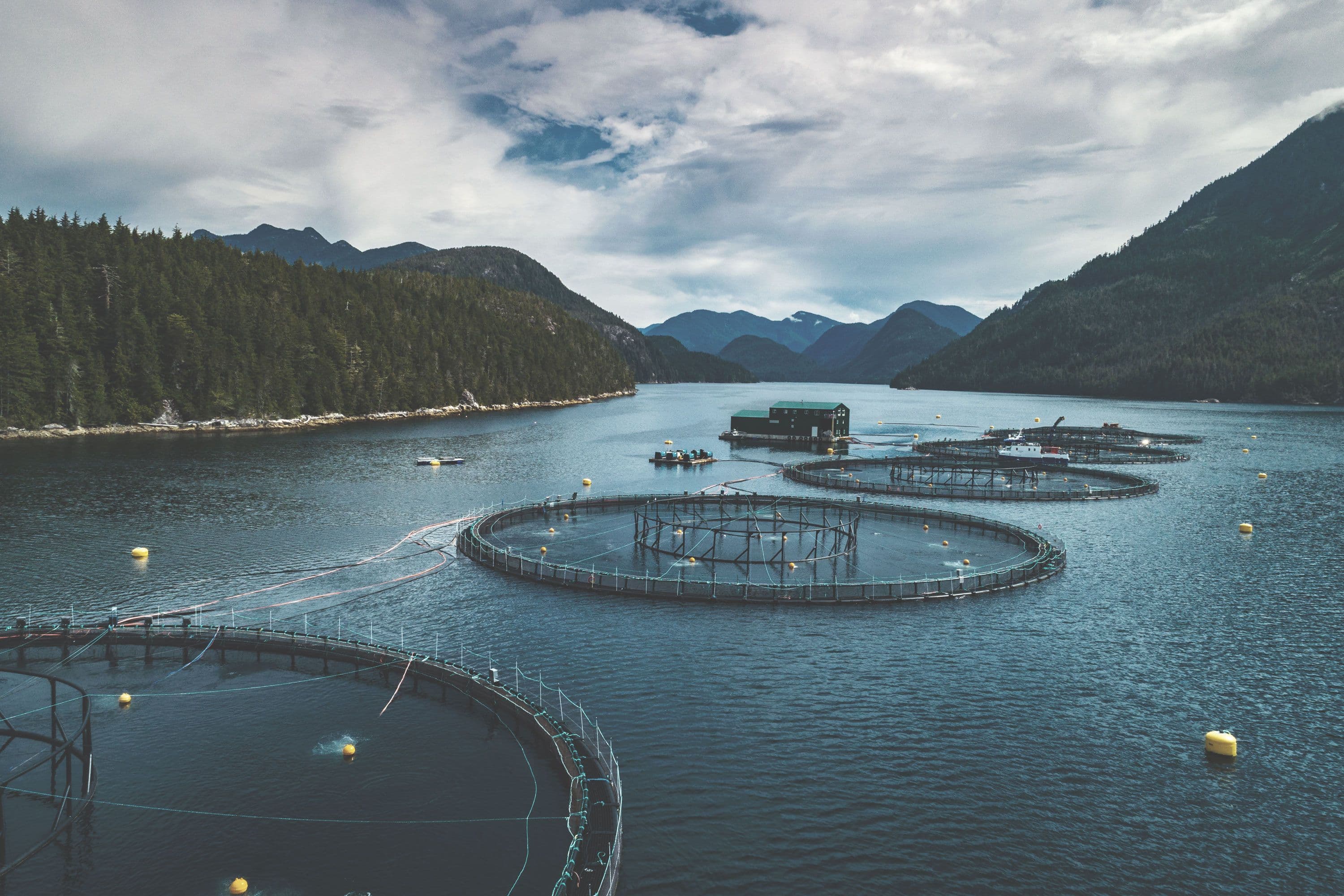
Projects
Gold River Hatchery – New smolt facility ‘RAS 34’
Grieg’s freshwater hatchery in Gold River is currently expanding to include a new state-of-the-art RAS (recirculating aquaculture system) building that will double Grieg’s smolt capacity. This building will replace two inefficient flow-through buildings to improve water usage.
Technology
Semi-Closed Containment
In 2020, Grieg BC successfully trialed pen-skirting systems at multiple sea sites to decrease the impact of harmful environmental factors like sea lice and plankton blooms. To learn more about this project, watch our video here: https://vimeo.com/501829519
The SeaState Dashboard
Grieg Seafood and Scoot Science of Santa Cruz, California have partnered to launch an innovative ocean analytics and data management platform that will provide real-time data on ocean environmental conditions to Grieg’s salmon farms in British Columbia.
This platform, the SeaState Dashboard, unifies existing sensor networks on farms to collect information and provide a clear window into how salmon farms react to changing ocean conditions using in-pen data and publicly available data. This means better predicting ocean trends, giving Grieg an opportunity to reduce its exposure to marine risks, such as harmful plankton blooms and sea lice outbreaks, as well as improve fish welfare and efficiency.
Some of the data collected by this platform will also be accessible to Indigenous groups, universities, scientists and eNGOs in order to study ocean trends and understand the interaction between ecological systems (like wild salmon) and the changing ocean environment. The portal will also make other data available to the public, such as Grieg’s sea lice numbers and compliance with regulatory bodies, which aligns with Grieg’s transparency goals.
The Ronja Islander
On Sunday, Feb. 9, 2019 Canada’s most technologically advanced aquaculture wellboat docked in Victoria after a long journey from Norway.
Grieg Seafood’s newest vessel, the Ronja Islander, completed construction in Norway in late 2019, and was custom built to address some of BC’s salmon farming challenges, including sea lice and safe fish handling during live transfers to farms.
“We designed the Ronja Islander using input from our stakeholders and Indigenous partners. We heard some of their concerns around salmon farming in BC and turned those concerns into solutions when we built the vessel,” says Dean Trethewey, Seawater Production Director at Grieg Seafood BC who led the wellboat project.
“The transfer of sea lice from wild fish to farmed fish is an ongoing issue for our industry and for British Columbians who are concerned for wild salmon migrating by our farms, and this wellboat is here to help with that. In addition to its state-of-the-art removal treatments for sea lice, the process features 100% capture of the detached lice which will be disposed on land. This is important to us and to wild salmon.”
The CAD $40 million wellboat operates on both coasts of Vancouver Island, servicing 16 of Grieg Seafood’s salmon farms.
The Ronja Islander features the world’s most advanced fish-handling technology during both treatments and live transfers to reduce stress for the salmon. New technology also ensures that in the rare event that any wild fish are captured during fish transfers, they will be separated from the farmed salmon and safely released back into the ocean.
“Sea lice treatment is a critical feature of the Ronja Islander, but the overall improvement in salmon welfare for both farmed and wild fish that the boat handles is just as important,” Trethewey says.
“We are always looking for ways to do and be better, and this vessel is not only the result of new technological advances in aquaculture – it’s the result of listening to the concerns of our partners and those who call BC’s coast home.”


